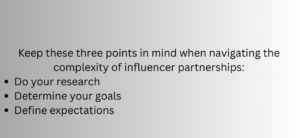Each September, PRSA recognizes Ethics Month to bring increased attention to the core foundation of the communications profession. Please visit prsa.org/ethics for additional programming and ethics resources and PRSA’s social media platforms for updates throughout the month.
In May 2023, the U.S. Navy was criticized by numerous lawmakers, veterans organizations and media outlets for its collaboration with an enlisted sailor and social media influencer who identifies as non-binary and performs as a female impersonator while off duty. The sailor posts pictures of these performances next to images in which the sailor wears a Navy uniform while on duty.
The Navy’s collaboration with Yeoman 2nd Class Joshua Kelley was part of its Digital Ambassador Program, an effort to spotlight service members with popular social media accounts who the Navy deems as positive representatives.
The program sought to reach potential recruits in different demographic groups who wish to receive information from trusted social media influencers. Kelley, who uses the stage name Harpy Daniels, was one of five members of the Navy’s pilot program that ran October 2022 to March 2023.
A couple of months later, in May, the Navy began receiving pushback online from active-duty service members and veterans groups over its collaboration with Kelley. In June, America First Legal, a conservative foundation, charged that Kelley had violated the Uniform Code of Military Justice “by engaging in partisan politics, acting disrespectfully toward superiors in public forums, bringing discredit upon the military through obscene social media posts and wearing the uniform under circumstances that imply Navy endorsement of personal views and activity.”
More than a dozen senators and multiple news outlets decried the Navy’s influencer program with Kelley. The Fiscal Year 2024 National Defense Authorization Act contains an amendment to suspend the Navy’s Digital Ambassador Program.
Supporters defended the Navy’s choice, calling the sailor a positive role model who promotes diversity and inclusion. In my view, Kelley’s performances and social media brand demonstrate that active-duty service members can also pursue off-duty passions as artists.
However, the case illustrates the complexities that organizations face when collaborating with influencers. Professional communicators might encounter the same challenges when promoting their organizations via think tanks, academic intuitions, nonprofit organizations and traditional media. However, protocols for working with influencers are still emerging.
As lead communicator for the maritime arm of NATO, I supported an experiment last March to collaborate with a travel influencer named Jackie Todd, who has approximately 120,000 followers on Instagram and 650,000 followers on TikTok. NATO did not have policies for influencer activities on a naval warship, so before her visit, we extensively researched her online presence and made sure that all stakeholders within our unit and within higher units supported the decision.
The successful collaboration with this travel influencer produced several posts on two of her social media accounts, allowing us to reach a younger demographic of possible recruits. NATO encouraged us to pursue this opportunity and my team learned some valuable lessons as a result.
Define goals, expectations.
First, we learned to conduct intensive research on the influencer to avoid any possible indiscretions. In the case of the Navy’s ambassador program, a cursory review of Kelley’s social media accounts might have discovered previous posts that appeared to violate the Department of Defense’s policies on service members’ political activity.
However, had the Navy communicated to the public why it had chosen those five sailors for its ambassador program, it might have been able to mitigate the resulting blowback. The controversy over the Navy’s collaboration with Kelley underscores the importance of consulting with legal, human resources and financial departments and of making sure that all stakeholders are considered before deciding to work with a social media influencer.
Before choosing an influencer, organizations should also define what they expect to gain from the collaboration.
The military as a whole faces a severe recruiting crisis. The Navy’s decision to select Kelley as an ambassador not only alienated some public affairs officers who are currently serving, but it also alienated veterans who have large numbers of social media followers and could be the service’s most prominent supporters to aid recruitment.

I believe these discussions and considerations are vital. My love of the Navy and the communication community inspires me to candidly address this topic. Currently serving military members can, on active duty, respectfully call attention to issues they wish to help change. It is how we “get real and get better,” the Navy’s call to action for leadership development and process improvement.
Like many organizations and institutions, the military cannot afford to ignore the young demographics that even Ramón “CZ” Colón-López, the most senior non-commissioned officer in the armed forces, says we need social media influencers to help reach, as a way of increasing recruitment.
However, we must first consider all stakeholders and the potential pitfalls of this new communication medium. Otherwise, we enter influencer partnerships at our peril. Not only can they backfire and undermine the goals they’re supposed to achieve, but collaborations with social media influencers can also tarnish the credibility of communicators and the organizations they serve.
Theresa Carpenter, APR+M, is an active-duty public affairs officer for NATO Allied Maritime Command. The views expressed in this article are those solely of the author and not of the Department of Defense or NATO. When off duty, she is a military content creator and host of the S.O.S. (Stories of Service) podcast, where she profiles change agents and those who give back to their communities. Carpenter serves on PRSA’s Board of Ethics and Professional Standards. This is her third blog post for PRsay on the subject of influencers. You can find all of her work here.
[Photo credit: adobe art]






